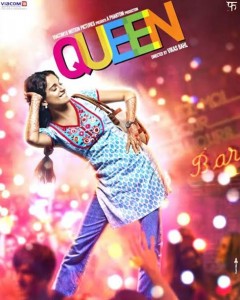 As a producer, Madhu Mantena has an impeccable track record of creative and commercial success. Subhash K Jha lists his five picks for the best of the best Madhu Mantena.
As a producer, Madhu Mantena has an impeccable track record of creative and commercial success. Subhash K Jha lists his five picks for the best of the best Madhu Mantena.
The first 100-crore success of Indian cinema. Ghajini, directed by A R Murugadoss, is not for the squeamish. The violence is prolonged, sadistic, and often done with the elaborate abundance and eye-catching elan of a staged opera (Ravi Chandran’s camerawork glistens and bristles with optimum optical glory). And yet women in the audience seemed to love the film. Ghajini is at heart a love story of a cocooned tycoon who discovers love in a working-class environment. Aamir Khan’s expressions of bewilderment, curiosity, pleasure, and acceptance in Asin’s company remind you of a baby that’s just discovered mother-love.
Marking the Hindi debut of Tamil superstar Suriya, this is another violent but stunning study of human avarice. The violence here could be considered overpowering in another context. Not here. Not this time. Violent tension is the crux and the core spirit of Rakht Charitra, released in two parts. You cannot take away the arms from the man, unless it’s one of those aforementioned limb-choppers at work again. Returning to a territory that Ramu knows by heart (if heart is the space you can mention in this film’s extra-aggressive context), the director has fashioned a bludgeoning homage to Coppola’s The Godfather. This is the Sicilian mafia transposed with frenetic fluency into the semi-rural Andhra milieu, where the caste system fosters the most barbaric acts of violence that man has ever conceived. Varma doesn’t flinch from the sight of unmitigated brutality. Often, you wonder if the dark recesses of the subconscious that Varma manifests are actually the spaces that the director enjoys peering into. But then, when you look closer into the eyes of his ravaged and ravaging characters, you see profound regret and fear barely discernible to the naked eye.
3. Masaan (2015):

Arguably the best film Madhu Mantena has produced, and also the finest cinematic exposition on the caste system since Bimal Roy’s Sujata, Neeraj Ghaywan’s directorial debut in Masaan is remarkable on many counts. The film set in Varanasi is as ambitious as it can get. There are two distinct stories about thwarted and love two bereaved souls floating down the Ganga to meet and converge finally. Hugely ambitious and epic in scope, though the film was made at an estimate budget of Rs 5 crores. Violence need not be only about physical force. Brutality can take many forms.Masaan, an outstanding study of brutal injustice and coercive subjugation of emotions and physical desires, shows us the many faces of violence in a social order based on inequality. Masaan is a contemporary modern fable of failure and redemption not done in that pretentious ‘European’ tone that made,say, The Lunchbox so endearing to the West. Neeraj Ghaywan risks losing out on a ‘European’ audience to remain true to his characters. Violence, when internalized, can be shattering.
4. Queen (2013):

Kangana’s Queen(t)essential Game-changing Film Queen didn’t only change Kangana Ranaut’s career, it also changed the female gaze in the mainstream Hindi cinema forever. Made on a shoestring budget, the Vikas Bahl-directed film was shot in the most expensive cities of the world, including Paris. Kangana had to often change her clothes in restrooms. But she had no regrets. In the year of highly forgettable Rajjo, and the frightfully campy Revolver Rani, Kangana sprang into superstardom in Queen. As the bride-to-be ditched at the altar, who goes on her honeymoon solo, Kangana sailed through the role of the clumsy hero with the self-assurance of a diva. Queen changed everything. Kangana’s fortunes. And the way audiences looked at female heroes. Hereafter, heroines were no longer looked at as epitomes of flawlessness and perfection. Broken, awkward, and dithering heroines who got drunk and danced on bar-tops to raunchy Asha Bhosle numbers were also welcome in the hall of femme fatales. Frothy and ebullient, Queen certainly is. But it’s a lot more.
5. Udta Punjab (2016):

Who thinks of such a story to tell?! Only a mind that is either supremely screwed-up or stunningly sorted. Madhu Mantena has never baulked at taking risks. Udta Punjab, directed by the brilliant Abhishek Chaubey, is a work of contemporary art so audaciously unprecedented in its vision and execution of a subject that is topical and timeless, you wonder if Bollywood, as we love and hate it, is finally growing up. On the other hand, lest we forget, filmmakers in the past like Bimal Roy, Guru Dutt, and Gulzar constantly prodded and pushed mainstream Hindi cinema into areas of darkness, not fearful of the unlit interiors of the human heart. Mantena and Abhishek Chaubey take forward to an altogether new high, the politically empowered human drama of Bimal Roy’s Do Bigha Zameen (the migrant’s plight in the city, as played out by Alia Bhatt’s character) and Gulzar Maachis (Punjab, bloodied battered and wounded, no more romanticized











